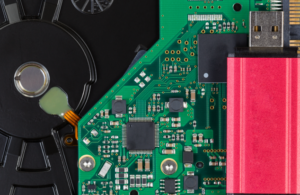Copper Balancing in Circuit Board Manufacturing
2022-12-20The manufacturing of printed circuit boards involves many processes and procedures. An understanding of the design specification is important because it affects the manufacturability, performance and production yields of the PCB. You must review the dynamics and pay attention to the technical details as you build the PCB and have it completed by the PCB manufacturer.
Copper balancing is a part of the PCB manufacturing process that cannot be ignored. This article will address the issue of copper balancing in printed circuit boards.
What is the role of copper balance in PCB manufacturing?
Copper is a very important element in the PCB. Copper is a good electrical conductor metal, the use of heavy copper in PCB has many benefits. PCB balanced copper has the following benefits.
Alignment
Reduces the damage caused by irregular heating of the board that can lead to internal track breakage.
Heat dissipation
Copper is used as a heat sink for power generation circuits, avoiding the use of additional heat sink components.
Increase the thickness of conductors and pads
Strong interlayer copper connections are achieved by plating through holes.
Reduced bottom line impedance and electrical dropout
Also reduces noise and improves the efficiency of the power supply.
PCB copper balance considerations
Copper area
Copper-rich areas should be organized in a grid format, which will help the PCB run smoothly.
Copper Symmetry
Symmetry is critical to the manufacturing process and helps with PCB soldering.
Balancing Copper
Balancing copper and providing it with a flat shape, bending and twisting of the PCB can affect the complete shape of the printed circuit board.
PCB Stacking
Designed to reduce the risk of distortion during the stress manufacturing of PCB boards.
PCB copper manufacturing methods
Imaging
This is the basic operation before starting the PCB design. Initially, you must find a way to create an image layout of the PCB design you will make.
Etching
Removes excess unwanted copper layers from the board and provides a final finish to the board.
Lamination
The lamination process allows the PCB design to be fixed to the circuit over time.
Milling
PCB milling helps you easily remove excess copper from the PCB board. The entire process is non-chemical, allowing multiple PCB assemblers to easily compile the entire PCB process.
Electroplating
This is an electrochemical process that helps to deposit metal on the board.
To summarize
There are many different ways to process copper for circuit boards. You can create copper PCBs in a simple step-by-step process.
PCB fabrication requires multiple types of machinery to complete the task in the shortest possible time, which makes completing printed circuit boards with optimal design a complex process.
Turn to KingPCB for your projects
KingPCB, one of the leading PCB suppliers in China, has over 15 years of experience in manufacturing and assembly.
If you have questions about manufacturing your project, contact us now with a Gerber file and Bom List, and we have a professional engineering team to evaluate and quote for you.




